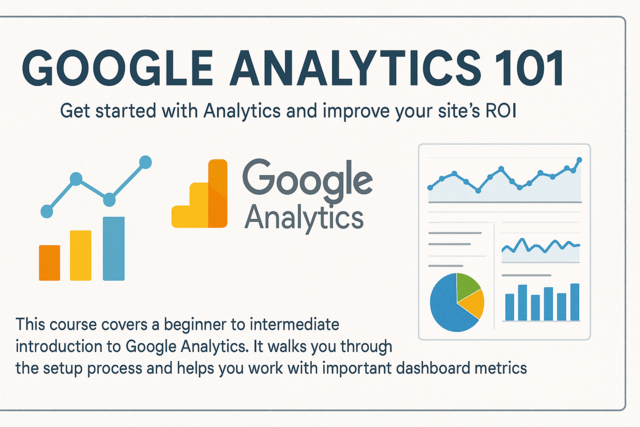Visual content has never been more popular, and for this reason, YouTube is dominating as a social network. In fact, 6 out of 10 individuals prefer online video platforms to live television (1). This presents a huge opportunity for businesses to utilize social media and video platforms to get in front of a large, captivated audience. If you've been considering marketing your business on YouTube but just haven't known exactly where to start, or if you're simply looking to step up your YouTube marketing game, this article is for you. We'll cover nearly every aspect of utilizing YouTube for business, including:
-
What types of videos to create and share
-
How to best optimize your videos for search and clicks
-
How to effectively promote your videos and channel
-
How to use paid YouTube ads to extend your reach
Why YouTube?
YouTube differs from most other major social networks in that it is not a feed-based platform. Instead, content is presented to users after it is actively searched for. There are several appealing aspects of the video sharing platform when it comes to digital marketing, including:
-
An attention capturing content
-
High volume traffic
-
Multiple marketing channels
-
SEO boosting capabilities
-
Easy cross-platform social media integration
-
Global accessibility
Utilized correctly, YouTube can serve as a great asset to any company within nearly any field. Sure, it will may require more time and effort to roll out an effective content strategy compared to other social platforms, but it's also a unique and, in many forms, better way to communicate with your target audience. Consider the steps to getting started below.
Do Your Research
Just as you would when strategizing the content for your blog or any other social media site, you need to understand your audience and also understand what it is exactly that you'd like for them to do. Do you want them to share your videos? Do you want them to navigate to your website? Before attempting to master your own YouTube channel, research what other companies within your industry are doing to create success. Search for relevant videos that have similarities in the outcome that you wish for. Once you start having data of your own, you can then begin to get more specific with your ideas.
Determine What Types of Content You'll Create
It hopefully goes without saying that a YouTube video needs to be compelling. But how is that done? What kind of content should you be producing? Well, if you can write or talk about it, then you can make a video about it. Make your videos worthwhile to your target audience, though. This is the most important factor. The following are some ideas to get you started:
-
Video tutorials and product demos: Show your viewers how to perform a certain task or use a certain item. This is great if you have a product that you can demo!
-
Video customer testimonials: Interview a happy customer or client. Customer testimonials can be much more cost-effective and often more powerful to an audience than commercials.
-
Business intro video: YouTube allows new users to create a Channel Trailer. This trailer can be used to give a brief introduction of yourself or business, and let the audience know what types of videos they can expect to see on your channel.
-
Behind-the-scenes videos: Take your viewers on a tour of your office or workspace, or introduce them to your staff! This is a great way to humanize and show off a less serious side of your brand.
-
Event presentations: Speaking at a conference or tradeshow? Record and publish it to share with your viewers.
-
Webinars: Most software allows for users to record their webinars. If relevant to your audience, upload them to share.
-
Commercials: Have you had company commercials produced? Upload them to your YouTube channel to broaden their reach!
-
Company update: Share information on any upcoming product launches, events or other changes happening internally.
-
FAQs: Compile a list of frequently asked questions that you or your business gets and respond to them via video.
As you create and promote different variations of videos, you'll be able to recognize which work best with your particular audience. Keep in mind that different types of videos will likely perform differently dependent upon when and where they are shared.
Determine how often you want to Publish Videos
Once you've done your research and determined the type of videos you'd like to create, look to your resources to see how often you can reasonably publish a video. We keep drilling on this, but never forget that quality will always trump quantity. It's going to take much more time to produce a truly great YouTube video than it is a set of Tweets. It's a good idea to think about this first though before you begin creating a schedule. Don't fret it you find in the beginning that you have more ideas than you have time or marketing dollars. Take it slow and see where your channel takes you.
Produce High-Quality Videos
There are certain skills required to produce a high-quality video worthy of going viral. Whether employees within the company take on the task or an outsourced expert is in charge of production, these are components are essential to the effectiveness of a video:
-
Storytelling/Writing: This is the first layer of YouTube. It's what holds everything together and brings full circle to make an impactful video.
-
Production: This is obviously the bread and butter of your video. It takes more than a steady hand!
-
Editing: This can be the most frustrating step in creating a YouTube video, but it is one of the most vital. Make sure that you have someone that understands editing and production.
Utilize Playlists
A playlist allows for a user sit back and continuously watch video after video without doing anything (not even the click of a button). This increases the likelihood that they'll watch more of each video, more of your videos and also increases the amount of time they'll spend on your channel. Utilizing Playlists can allow for you to boost your rankings (more views=more popular) and find new keyword opportunities.
Promote Your Videos
Promoting - There is no point in making a video if no one is going to see it. There are three main ways to generate views for your videos:
-
Having a high SEO rank on Google and YouTube for popular and relevant keyword searches.
-
Having a large subscriber base.
-
Grow your YouTube presence with your other online properties, including your website and other social media networks.
How can you achieve this?
-
Promote your YouTube channel on your other social media profiles. Use relevant and trending hashtags in these promotional posts to increase your reach.
-
Enage and utilize your loyal fans. By digging into your YouTube analytics, you can find out which users are most active with your content. Engage with them and, if their audience is large enough and relevant enough, consider using making them a part of your content strategy.
-
Add a YouTube widget to your website, blog and email signature.
-
Collaborate with other users in a complimentary niche. Approach other YouTubers about the possibility of promoting one another's videos and/or creating co-branded videos to build each of your audiences.
Optimize Your Videos for Search
Optimizing your videos for both on-site and off-site search engines is the key to success on YouTube. After producing and publishing a video it should be easily searchable and found. Users aren't likely going to put forth much effort in finding the perfect informational or entertaining video. They're more likely to click on one of the first videos that pop up from their search. There are several guidelines to follow for making a video more easily found:
-
Title: Make sure that keywords are at the very beginning of the title. Use different technique, such as a colon, to break up the title and to make putting keywords first easier.
-
Description: There is no limit on how long or how short the description has to be. The more keywords included in the descriptions the more search hits will come up.
-
Tags: Just like hashtags on other social media platforms, make sure to tag anything that is relevant to the information.
-
Closed captioning: Adding closed captioning is beneficial to your hearing-impaired viewers of course, but will also provide another opportunity to utilize rich keywords for SEO purposes.
-
Transcription: Having a text-based version of your video gives Google and YouTube more text to search and index. Some users also may prefer to have this version on hand as well.
-
Thumbnails: Thumbnails can have the biggest impact on clicks. Make sure you use captivating, high-contrast images that work well in both small and large formats.
Optimize Your Content to go Viral
The ultimate goal of a YouTube video is to get as many views as possible. There are certain guidelines that can be followed in order to increase the odds of having a video go viral:
-
Keep it simple: Not every video has to tell the complete story. Focus on the topic at hand and don't stray too much, because viewers might, too.
-
Don't focus on yourself too much: It's easy to want to be the highlight of the video but remember that it's the message itself that's important and that over-promoting is often frowned upon.
-
Include a call to action: Viewers clicked through to your video to learn something or be entertained. Test them afterwards, by asking them to do something. If they don't utilize what they just learned then they will be more likely to forget it. If you video was geared towards entertainment, prompt them to share with their friends and followers.
-
Share your content: Make sure to put your YouTube content across all other social media platforms and your website.
Dig Into Your YouTube Analytics
YouTube has it's own analytics page that will help you as a business to identify key performance measures. These analytics will help you to understand information such as the demographics of the audience viewing your channel, what keywords are drawing them to your channel and ultimately how you can leverage your videos and content to be more successful.
-
View Report: This section resembles that of a box score, like after a baseball game. The view report will show the overall performance of your channel, including your number of views per video and average viewer duration.
-
Demographics: This section will give you a breakdown of who is viewing your channel and individual videos. This can be used to help determine new target audiences for future videos.
-
Traffic source: This section will give you a breakdown of your sources of traffic. Understanding your traffic sources will help you to determine what type of content and keywords are drawing users in. For example, these analytics will show exactly what keywords are leading viewers to your videos.
-
Subscribers: This section will show how many users have subscribed to your channel, as well as how many have unsubscribed. This will be a key measure of success for your videos.
Be Consistent and Maintain your Presence
It's important to keep up with the audience and to maintain the passion about the topics. Create a production schedule that is manageable for the company and stick to it. By not maintaining your channel you run the risk of losing subscribers and missing out on a huge market of viewers.
Conclusion
Using YouTube as a medium allows for users to engage with your content in a way that they otherwise wouldn't have been able to do so. The reach and power of YouTube has been demonstrated by the many. This includes businesses as well as artists, celebrities and comedians that have created a career out of their YouTube videos. Simply put, the effectiveness of video marketing cannot be denied, and the power of YouTube can be a great asset to companies if utilized correctly.
References:
(1): https://www.brandwa tch.com/2016/06/36-youtube-stats-2016/






























